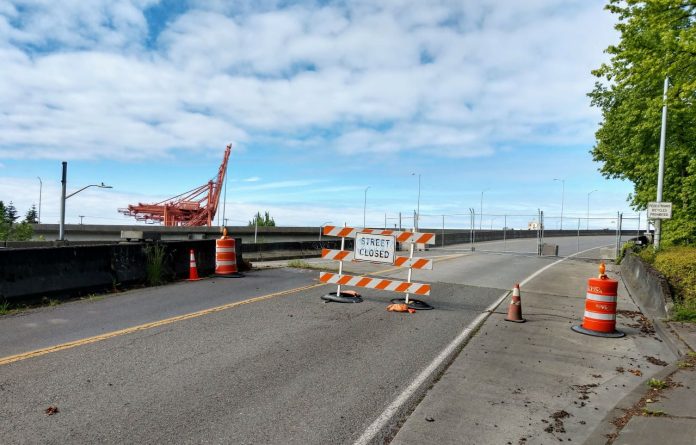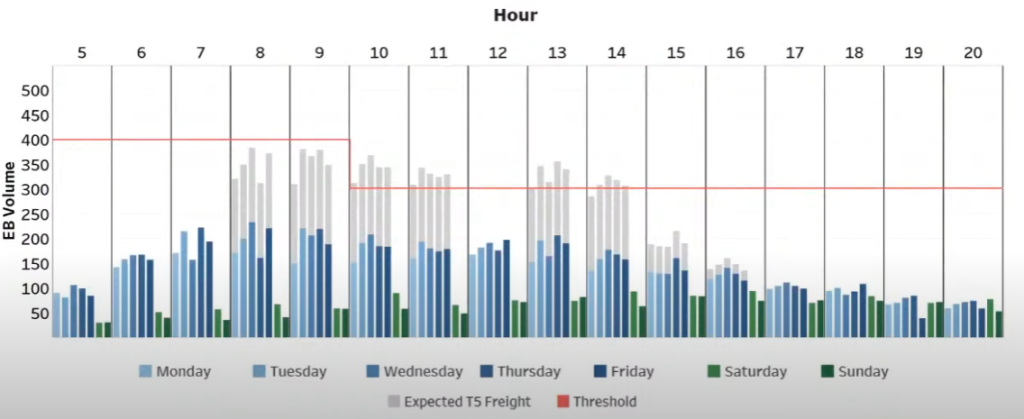
The West Seattle High Rise Bridge safety project has made progress since Mayor Jenny Durkan’s announcement to repair, rather than replace, the West Seattle Bridge. In early January, Seattle Department of Transportation (SDOT) crews finished phase one stabilization repairs to the West Seattle Bridge. This moved the project from emergency stabilization to full rehabilitation. Now at 30% design for the high bridge and swing (low) bridge projects, SDOT has returned with updates and next steps. Presented at the March 10th community taskforce meeting and detailed in SDOT’s blog was the keeping of pace with the schedule, start of the contractor selection process, complete internal baseline schedule, and official cost estimates.
Touching on cost first, the preliminary design cost was estimated at $175 million for the whole program, which breaks down into an additional $58 million for high bridge rehabilitation and $14 million for low bridge rehabilitation. Other costs include Reconnect West Seattle, monitoring, phase one rehabilitation, and program management.
The estimated $72 million cost of bridge rehabilitation will pay for proven construction methods to ready the high bridge for return of traffic and the low bridge to last for the remainder of its lifespan. Much of the work will be similar to what was done in phase one, with carbon-fiber wrapping, epoxy crack filling, and post tensioning work. New work will include Pier 18 ground stabilization for seismic improvements, though this work isn’t necessary prior to bridge reopening. SDOT is also considering possible repair projects on the broader corridor, and inspection of the center-lock system on the lower bridge to see if that needs repair.
After discussing cost estimates, SDOT presented their preliminary schedule for high and low bridge rehabilitation at the meeting. These estimates line up with the 2022 promise by the City, with a more specific second quarter of 2022 completion for high bridge repair and a later 2022 third quarter completion for low bridge repair. Another schedule and design update will come this summer.
Contractor details
As the schedule suggests, SDOT is now looking to select a contractor this spring and bring them on board by the summer. On March 10th, SDOT initiated the process to bring on a contractor by advertised a Request for Qualifications and Project Approach to private sector consultants with an April 12th due date for proposals. They are moving forward with a General Contractor/Construction Manager (GC/CM) approach that should provide better schedule predictability. GC/CM is provided through state law, and the City has guidelines for it.
A GC/CM is procured through a multi-part selection process that includes consideration and evaluation of the GC/CM bidder qualifications and experience together with some cost elements. The GC/CM is selected early in design and generally assists the Owner in evaluating the project during the design phase and then provides construction management services. This type of project delivery is sometimes called Construction Management at Risk because the contractor assumes part of the project construction risk.
City of Seattle’ GC/CM guidelines
When Grey Nickels sought clarity on contractor duties, Grey Izzo of SDOT said that the contractor will participate in pre-construction, provide feedback on constructability of the design, identify scheduling risks, and not be responsible for the design. This more collaborative process is what the GC/CM process is supposed to deliver. If things go well, SDOT hopes to have selected a contractor in mid to late May. Goals of project construction include honoring schedule commitments (including high bridge repair complete by June 2022), maximizing safety, open communications, collaboration with project team and stakeholders, and being a good neighbor.
Low Bridge updates and concerns
In the taskforce meeting, SDOT also discussed two projects affecting the low bridge. They’re prepared to advertise a contract on the controls project in the next two months, for which they’re continuing to coordinate Communications and Horizontal Direction Drill design. There’s also the Cylinder Lift project, which entails inspecting, repairing, replacing the east cylinder — the west cylinder was replaced in 2018 — that allow the low bridge to swing open. SDOT anticipates that cylinder seals will be shipped this spring, and they will be exploring lifting frame redesign to lessen impacts when the cylinder is replaced.
The taskforce also revisited low bridge access. Since we last discussed the low bridge in The Urbanist, photo enforcement of the low bridge started in January. This has led to a sharp decrease of low bridge usage, which is critical to not impeding access to emergency vehicles. The agency is still figuring out how to adjust access to the low bridge, especially when there are potential scenarios where projected traffic volumes would impede emergency services. Some taskforce members hoped that SDOT would expand low bridge access to those on their way to lifesaving medical treatment. SDOT assured members that they were gathering information to adjust low bridge access in an equitable way.

Reconnecting West Seattle and what’s next
In 2020, SDOT completed 20 Reconnect West Seattle projects. These are joint efforts between the City and neighborhoods to restore travel to and from West Seattle and surrounding neighborhoods as much as possible, and to mitigate the traffic impacts caused by bridge closure. Projects include bike infrastructure improvements, new bus lanes, speed radar signals, and repaving work. 2021 projects can be visited at SDOT’s interactive map, which you can also use to see project status.
SDOT is still collecting feedback for Reconnect West Seattle, project ideas for 2022 are due March 31th and proposals can be sent to WestSeattleBridge@seattle.gov
For the next community taskforce on April 8th, SDOT plans to continue bridge and traffic management discussion. Interestingly, talk on key planning efforts for eventual high bridge replacement will also occur in the next meeting. Follow SDOT’s weekly stabilization updates, bridge announcements and planning, and community outreach event announcements on their blog or the West Seattle Bridge project website.
Shaun Kuo is a junior editor at The Urbanist and a recent graduate from the UW Tacoma Master of Arts in Community Planning. He is a urban planner at the Puget Sound Regional Council and a Seattle native that has lived in Wallingford, Northgate, and Lake Forest Park. He enjoys exploring the city by bus and foot.




